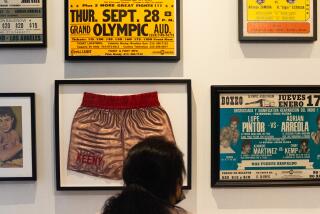Shanghai unveils its global side at 2010 Expo
Shanghai likes to advertise its 2010 Expo as the largest single event in human history. This, at first, might sound abstract. But as soon as you find yourself standing outside the Expo gates at 9 a.m., having just escaped a tour-bus traffic jam and surrounded by a growing mass of people, you get the idea.
The wild outlines of the Expo pavilions are visible up ahead, but between you and them are chattering school groups, families and gangs of happy, gangly teenagers. Size them up — for the next 12 hours, these are your companions and competitors at Expo.
Welcome to Shanghai’s coming-out party. Open to visitors until Oct. 31, the Expo is this city’s version of the Olympics, its chance to announce its arrival as a truly international city.
Under the banner of “Better City, Better Life,” Shanghai has spent the last few years preparing to put on a spectacular six-month-long show. And, despite the lack of Olympic sports and relatively little international attention, the city has managed to pull together an event of historic proportions.
It is the largest Expo on record, with 191 participating countries. Shanghai has corralled 72,000 volunteers to work at the park during the summer, with an additional 100,000 put to work around the city. And over the course of the festival, the Expo will play host to international acts from L.A.’s Ozomatli to the Pyongyang Small Bell Dancers. The promise of all this is attracting a sea of domestic tourists each day to see what the world looks like, or at least what the world looks like according to Expo.
Before you get to the fairgrounds, one of the attractions is the city itself. In the years leading up to the Expo, Shanghai experienced a building boom impressive even for China. Six new subway lines are in operation. A new airport terminal speeds your arrival, and new highways smooth the drive into the city. The city’s historic Bund, a stretch of colonial buildings along Shanghai’s Huangpu River, was refurbished to make way for a park and a grand walkway that offers impressive views of the Shanghai skyline.
These larger construction projects were complemented by a massive effort to beautify the city. Apartment buildings were given a fresh coat of paint, old walkways were redone with new bricks and cobblestones, and flowers were planted everywhere, from traffic islands to elevated expressways. All in all, estimates in China’s state-run media put Expo’s price tag at about $43 billion, including city infrastructure, beautification and construction of the two-square-mile Expo grounds. If these estimates are close, Shanghai is spending more than twice the amount that Beijing shelled out before the Olympics.
Because there are no sports to watch, visiting the Expo is more like going to a fair where the main attraction happens to be a series of odd, international museums. And unlike the Olympics, the Expo is catering primarily to a domestic audience. It’s a chance for the world to introduce itself to China, rather than the other way around. For foreign tourists, the Expo offers a great opportunity to watch China watching us.
Of course, foreign tourists are at a bit of a disadvantage. Although many have not heard about the World Expo until, well, right now, Chinese tourists have been preparing for months. Developing strategies for an Expo trip has become a national pastime. And with weekday crowds estimated at 200,000 to 300,000, this might be necessary.
The Expo grounds are spread across two banks of the Huangpu River, with ferry terminals offering transportation from one side to the other. Big-name architects, such as Thomas Heatherwick, who designed the British pavilion, and Italy’s Giampaolo Imbrighi, designer of Moscow’s “Rome” metro station, arrived with building designs that would please the eye and attract a crowd.
China’s central red pavilion looms over a population of temporary structures, some with unlikely protuberances and elegant latticework, others that simply look like spaceships. The Spanish Pavilion is covered in rattan squares like fish scales. The British pavilion, with its layers of acrylic rods, looks like a futuristic sea urchin.
The first thing to remember when you arrive for the Expo is that, as international as this event is, you are still in China. The operating language is Chinese, although you’ll find most of its student volunteers do speak some English. This also means there are huge crowds of Chinese tourists. And huge crowds of Chinese tourists means you will have to stand in line.
You won’t be able to avoid them, so you might as well consider the lines part of the experience. No two are quite the same. Waiting in line can be competitive, with people racing past you as soon as space opens up. The most determined at the Expo, or maybe those with the most foresight, bring tiny folding stools and hang out while they wait. The longest lines tend to be outside the Saudi Arabia, Germany and France pavilions, where things can get a little rowdy. In some cases, when lines are too long or visitors too disgruntled, they are best avoided. Your enjoyment of a pavilion is conversely proportional to how long you stand in line. Other pavilions, such as those of Luxembourg and Indonesia, generally offer shorter waits and interesting exhibits.
Visiting the China Pavilion, which is the primary aim of many Expo tourists, takes advanced planning. Currently, entrance to this pavilion depends on getting your hands on free reservation tickets. These are handed out at all Expo entrances, but the supply is limited, so be sure to arrive early.
There are reliable strategies to beat the crowds. Most of the pavilions stay open until 10 at night, and half-day tickets are offered, starting at 5 p.m. The lines tend to peak about 10 a.m. and slowly diminish as the day goes on. Nighttime also is a good time to visit the Expo grounds, because some of the buildings are at their most spectacular when lighted up.
Certain pavilions are a little more off the beaten track. The North Korea Pavilion, for example, is surreally accessible. Although a Chinese friend pooh-poohed it for looking as bland as a “Chinese public toilet from the 1980s,” the boxy gray building has a certain allure. Inside, you can browse through a selection of North Korean goods, including a frog mariachi band made from seashells, and watch videos on life in the country. The Myanmar Pavilion is likewise worth a look.
When visiting the Expo, it is good to keep in mind that not all brilliant-looking pavilions house brilliant exhibits. The British Pavilion, for example, is probably the most striking structure, but its interior seems impossibly small. The drab U.S. Pavilion offers a series of three short films that are well done. One includes footage of Kobe Bryant singing the praises of teamwork as an American value. John Downham, a worker at the British Pavilion, summed it up: “It’s like a present,” he said. “If it’s a beautiful big box, then you expect it to have something wonderful inside.”
Downham has a personal rating system for pavilions based on how well they address the Expo’s theme, “Better City, Better Life.” Germany does a good job, with exhibits that discuss car-sharing schemes and housing programs for the elderly. Spain, he said, was wonderful but inexplicable. “There is a gigantic, 30-foot baby inside,” he said. “I asked a Spanish guy about it, and he said, ‘It’s the future!’ ”
Other highlights include the United Arab Emirates Pavilion and the entire eastern side of the Expo grounds, where the corporate pavilions such as Coca-Cola’s “Happiness”-themed building are housed. The crowds are usually smaller on the eastern banks of the Huangpu, and many of the exhibits, such as the 4-D movie at the Shanghai Automotive Industry Corp. / General Motors Pavilion, are as good, if not better, than the pavilions of most countries.
Food is readily available inside the Expo grounds, and some pavilions offer beer and wine. For popular food items, such as Belgian waffles, you may have to stand in line, but many restaurants are uncrowded. At the Spanish Pavilion, you can dine on paella while watching flamenco dancing; in France, you can choose either a bistro or a restaurant offering sea scallops carpaccio. Get your wine at Chile and South Africa, your beer at Ireland and Belgium.
The Expo is huge and crowded, so no matter what your strategy, do not expect to see it all. In fact, you could easily spend a day just wandering, waiting for the next parade or performance and watching a wide selection of China walk by. Keep an eye out for visitors who have bought headbands with the large blow-up Expo mascot. You might see performers on unicycles or stilts wander idly by. And if you wait long enough, someone will ask to take your picture, and you’ll realize that you’re as much a part of the show as everyone else. The Expo is China’s world; we’re just visiting.
More to Read
Sign up for The Wild
We’ll help you find the best places to hike, bike and run, as well as the perfect silent spots for meditation and yoga.
You may occasionally receive promotional content from the Los Angeles Times.






